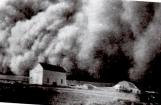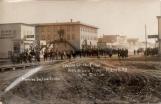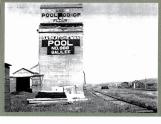1
After reviewing the above histories of 'small town Saskatchewan' and seeing the once vibrancy of these centres, one is sadden that all that effort of the homesteading folks put into building is a mere memory to be reviewed only in the local history books.Each center was almost a complete entity of its own with many goods and services that were available: medical doctors, lawyers, general stores, blacksmith shops, lumber yards, church, schools, etc. no shortage of recreational sport activities curling, baseball, etc.; social endeavours were many that included live drama, glee clubs, quilting bees, dances, local bands, picnics, and more.
For many small centers the slow decline began first with fire. It had a devastating effect at times wiping out a great portion of the commercial center. In many cases due to financial circumstances very little was rebuilt.
3
Second 'the Depression' of the 1930s came, which began the exodus of farmers going to northern regions of the province seeking a better life, and the centers would never recovery their vitality.Third, the motorized vehicles and better roads had people travel further to conduct business and/or purchasing goods away from their center.
Fourth, the ability to purchase farmland and larger agricultural machinery, which increased the farmer's holdings, resulted in fewer and fewer families living on the land. With fewer people there was less demand on the commercial sector and most of these closed shops.



